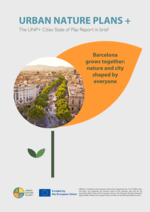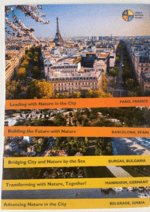
Barcelona State of Play report in brief
This summary from Barcelonas State of Play Report shows how the city is turning streets, roofs, parks and riverbanks into nature, climate-resilient space...
Lighthouse City
Welcome to Barcelona, a city full of history, cultural vibrancy and a deep connection with nature. Founded over 2,000 years ago as Barcino, Barcelona's ancient roots can still be seen in the Gothic Quarter, where Roman ruins and mediaeval architecture stand side by side. Today, Barcelona thrives as one of Europe's densest cities, with 1.6 million inhabitants in its 102 km², creating a vibrant urban fabric that combines efficiency with cultural richness.
Lighthouse Cities build on existing UNPs to explore best practices and advocate for the policy intergration of UNPs and nature-based solutions.

This summary from Barcelonas State of Play Report shows how the city is turning streets, roofs, parks and riverbanks into nature, climate-resilient space...

City Postcards are a visual communication tool created for each partner city - Barcelona, Paris, Belgrade, Burgas, and Mannheim. Each postcard features a...